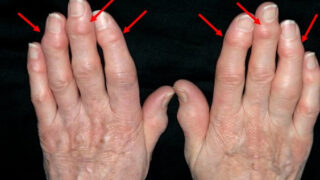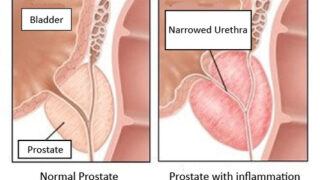Table of Contents
Q What is plantar fasciitis?
Plantar fasciitis is a painful condition that affects the bottom of the foot. It is caused by inflammation of the plantar fascia, which is a thick band of tissue that runs across the bottom of the foot from the heel to the toes. This condition is commonly seen in people who are on their feet for long periods of time or who frequently participate in intensive activities like running or jumping.
Today, we will discuss the symptoms, causes, and treatment of plantar fasciitis. We will also provide tips on how to protect yourself and exercise in a way that helps you avoid getting hurt.
Symptoms of Plantar Fasciitis
The most common symptom of plantar fasciitis is pain in the bottom of the foot, especially in the heel. The pain is usually a lot more pronounced when first getting out of bed in the morning or after sitting for a long period of time. The ankle pain caused by Plantar Fasciitis may also be more severe after exercising or engaging in other physical activity.
Other symptoms of plantar fasciitis may include but are not limited to:
- Stiffness in the bottom of the foot
- Swelling in the bottom of the foot
- Pain in the ankles when getting up
- Pain that worsens over time
What are the causes of Plantar Fasciitis?
While it is difficult to diagnose on a large scale, there are several reasons why plantar fasciitis may occur in patients of all ages and groups, it has a diverse demographic.
While it is most often seen in patients exhibiting strenuous work life and excessive physical activity, there are several other factors that can contribute to the development of plantar fasciitis. Some of these factors are as follows :
- Overuse and over exercising: People who engage in intense activities like running or jumping for long periods of time are more likely to develop plantar fasciitis because of the constant strain on the plantar fascia.
- Age: As we get older, the area around our plantar fascia becomes less flexible and more prone to inflammation [swelling].
- Weight and Obesity: People who are overweight or obese are more likely to develop plantar fasciitis because of the extra weight they place upon their feet.
- Foot mechanics: People who have flat feet, high arches, or show some sort of an abnormal gait are more likely to develop plantar fasciitis.
- Type of shoes: Wearing shoes that don’t provide enough support or cushioning can put extra strain on the plantar fascia, leading to inflammation and pain.
Q Exercises and treatment for plantar fasciitis
Plantar fasciitis can be quite painful to deal with on a daily basis. This is one reason why the majority of the treatment for plantar fasciitis aims to provide relief and reducing inflammation in the affected areas. We also encourage rest and recovery and taking adequate steps to prevent it from recurring.
The treatment for plantar fasciitis can often be extended for long periods of time depending on the severity of the inflammation. Some of the treatment options for plantar fasciitis are as follows :
- Rest: One of the most important things you can do to treat plantar fasciitis is to rest your feet as much as possible. Try not to overexert yourself. Being able to manage your body’s limits while maintaining regular gradual exercise is a process after all.
- Try applying ice: Trying the classic approach sometimes helps immensely with relief. Applying ice to the bottom of your foot can help reduce pain and inflammation. You can use an ice pack or a frozen water bottle to apply ice to the affected area.
- Try to stretch your muscles: Stretching your calf muscles and the bottom of your foot can help relieve tension on the plantar fascia. A good way to do this is to try simple stretches like standing on a step and letting your heels hang off the edge.
- Find the right shoes for your feet: Never underestimate the value of a shoe that fits you just right. There is no real replacement for wearing shoes that provide good support. The right amount of support and cushioning can help reduce strain on the plantar fascia ligament. Look for shoes with good arch support and a cushioned sole to help your feet find a good balance.
- Orthotics: You can also look into custom-made braces or orthotics. Finding the right kind of brace that can help support your feet can be a game changer and substantially relieve pressure on the plantar fascia ligament.
- Physical therapy: Depending upon the severity of your symptoms, considering physical therapy is also a very good choice. Finding a physical therapist that you like is important because they can help you develop an exercise program to strengthen the muscles in your feet and legs and improve your overall foot balance and posture.
- Medications: You can also consider over-the-counter pain relievers like ibuprofen or naproxen. While these medications can help reduce pain and inflammation, it is important to consult with a doctor before using them. In some cases, your doctor may prescribe a stronger medication. We do recommend that you do not use these medications as a first option and eliminate other methods before resorting to this option.
Consultation
While we did try to go over most of the common causes and reasons for developing plantar fasciitis, it is important to note that this is no way an exhaustive list. It is always helpful to consult with your doctor or someone who is familiar with the condition so that you can receive a proper diagnosis. Being aware of the severity of the symptoms can also help with managing foot and heel care in most cases.
Please reach out to us for information and inquiries. We would be happy to help.
Author

-
-Dr. Yuji Okuno-
ฉันเริ่มต้นอาชีพในฐานะแพทย์รังสีวิทยาทางการแทรกแซง ซึ่งนำไปสู่การวิจัยเกี่ยวกับการสร้างหลอดเลือดผิดปกติในระหว่างการศึกษาปริญญาโท ในฐานะผู้เขียนหลัก ฉันได้เผยแพร่ผลการศึกษาที่เกี่ยวข้องกับยีนที่เกี่ยวข้องในวารสาร Nature Medicine ในปี 2012 จากงานวิจัยนี้ ฉันได้พัฒนาการรักษาด้วยการอุดหลอดเลือดแบบใหม่สำหรับโรคทางกล้ามเนื้อและกระดูกเรื้อรัง เช่น ข้อเข่าเสื่อมและไหล่แข็ง และเป็นคนแรกที่รายงานถึงความปลอดภัยและประสิทธิภาพของมัน แนวทางนี้กำลังได้รับการศึกษาระดับนานาชาติ
-Career-
2549-2552 นักศึกษาฝึกงาน, ภาควิชารังสีวิทยา, คลินิกา ET, โยโกฮาม่า, ญี่ปุ่น
2552-2555 นักวิจัย, ศูนย์วิจัยการแพทย์แบบบูรณาการ, มหาวิทยาลัยเคโอ, โตเกียว, ญี่ปุ่น
2555-2558 นักวิจัยคลินิก, ภาควิชารังสีวิทยาทางการแทรกแซง, โรงพยาบาลเอดะโงะ, โตเกียว, ญี่ปุ่น
2558-2560 ผู้อำนวยการ, ศูนย์แทรกแซงทางกระดูกและข้อ, โรงพยาบาลเอดะโงะ, โตเกียว, ญี่ปุ่น
2560- ปัจจุบัน ผู้อำนวยการสูงสุด, คลินิกโอกุโนะ, โตเกียว, ญี่ปุ่น
Latest posts
 Sep 12, 2025โรคเกาต์ FAQ
Sep 12, 2025โรคเกาต์ FAQ Sep 12, 2025Heberdens Nodes FAQ
Sep 12, 2025Heberdens Nodes FAQ Feb 7, 2025Chronic prostatitis โรคต่อมลูกหมากอักเสบ
Feb 7, 2025Chronic prostatitis โรคต่อมลูกหมากอักเสบ Feb 7, 2025Frozen shoulder โรคไหล่ติด
Feb 7, 2025Frozen shoulder โรคไหล่ติด